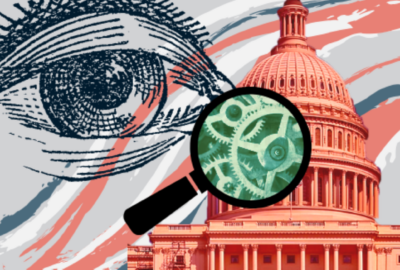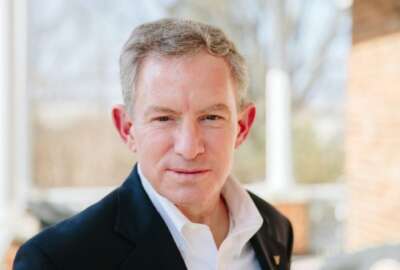White House recognition for a long-serving supporter of STEM education
Science, technology, engineering and mathematics education (STEM), is a critical need for the United States, especially since math skills of American students keep...
Science, technology, engineering and mathematics education (STEM), is a critical need for the United States, especially since math skills of American students keep dropping. The National Science Foundation has been funding research into STEM education. The Federal Drive with Tom Temin talked with the person, Sylvia Butterfield, who has led that effort as the deputy assistant director of NSF’s Directorate for STEM Education. And she just received a Presidential Rank Award.
Interview Transcript:
Tom Temin Yeah, it’s very august company. And a couple of questions. Let’s begin with the fact that you have two jobs at the moment. Besides the permanent job as deputy assistant director, you’re also the acting assistant director for the NSF’s Directorate for Social, Behavioral and Economic Sciences. That seems like a plateful.
Sylvia Butterfield Yes, it is. But as senior executives, we are expected to be able to assume leadership roles across the agency and indeed across the federal government. But I’m really enjoying my time as the acting assistant director for the Social Behavior and Economic Sciences Directorate. It is an area where I have the greatest respect for the work that they do in terms of psychology, sociology, economics, you name it. But we find that it is really critical to consider the impact of various activities on people and society, and that’s one of the contributions that the SBE, Social Behavior and Economic Sciences Directorate can offer.
Tom Temin And I imagine SBE has kind of a long border with education too, for that matter.
Sylvia Butterfield Absolutely. We have collaborated with the SBE Directorate on many occasions, especially in one area we call the science of broadening participation. As you know, part of our mission is to ensure that we are creating opportunities everywhere for people in the sciences, and that means addressing the diversity of the STEM workforce and ensuring that all Americans have access to high quality STEM education.
Tom Temin And let’s talk about the work you’ve done 20 years now, I think it is at the NSF in overseeing this area. Tell us what happens in the STEM education directorate. What do you do there, and what are the kinds of institutions that receive the funding?
Sylvia Butterfield That’s a great question. So the STEM education directorate has four divisions. The Division of Undergraduate Education, the Division of Graduate Education, the Division of Excellence for Equity and STEM, as well as the Division of Research on Learning. So we cover the gamut from K-12, which is research on learning. And that includes in school and out of school to undergraduate graduate education. And then the Division of Excellence for Equity and STEM is home to programs that target the work in minority serving institutions. So there’s a program for Hispanic serving institutions, as well as historically black colleges programs that address how women are integrated into the STEM workforce, and more. So NSF, through our funding, we are supporting institutions of higher education. But in the Division of Research on Learning, what brought me to NSF was a program that focuses on out-of-school learning. The current name is Advancing Informal STEM Learning, so that includes support for museum science centers, zoos, aquaria, etc. And those programs really help to complement what goes on in the K-12 classroom and the support that we provide for teachers, teacher training and curriculum development.
Tom Temin And what’s your sense of the state? I made a statement about it. That’s my opinion of education in these fields, because if you look at everything in the future, the economic competition, the military competition, the strategic competition in the world will take Americans that are good at algebra, trigonometry, calculus and thinking in mathematical ways. I consider mathematics almost as a language as much as a thing you calculate. And so what are the grand challenges here?
Sylvia Butterfield That’s a great question. I think, and this is just my opinion. I think what we try to do is to take into consideration all of the things that you talked about, and the fact that the way that people learn has evolved over the years, because there’s a lot more integration of technology, artificial intelligence, etc.. And so what we try to do is to provide resources for academic institutions to create cutting edge learning that’s evidence based. Using evidence from research to show what are the most effective strategies for learning. And again, we address both in school and out of school learning. But most of the programs within the divisions that I mentioned are focused on learning in the traditional classroom setting. But when I say traditional, I mean in school only because what’s traditional now is very different from what may have been the case when I was in school some years ago. So you need to take into consideration online learning. Think about how we all had to pivot to online learning during the pandemic. You need to take into consideration the availability of resources that make hands on learning so much more engaging for young people. And I think collectively, the programs that NSF provides funding for, such as the Discovery Research K-12 program, providing resources for models and learning opportunities for K-12 teachers, as well as students and many other programs. The IU’s improving undergraduate STEM education. These programs are evolving as the research shows how to best integrate these tools into STEM learning. And when I say STEM, of course, I mean science, technology, engineering and mathematics.
Tom Temin Sure. We’re speaking with Dr. Sylvia Butterfield. She’s deputy assistant director for the Directorate for STEM education at the National Science Foundation, and a new Presidential Rank Award winner. And the Presidential Rank Award announcement doesn’t say much about the recipients. What is the work you feel that got you the rank award here.
Sylvia Butterfield As you mentioned earlier on, I have been at the National Science Foundation for over 20 years. I came in 2000 as what’s called a rotator under the Inner Governmental Personnel Act, where you’re on a loan from an institution to the government for anywhere from 1 to 3 years. And I must say that over that period of time, I’ve had an opportunity to do so much that it’s hard for me to summarize succinctly, but I’ll say some of the things that I’ve done, you mentioned early on my role in leading STEM education programs. So I’ve had the opportunity to develop, manage and lead programs for K-12 students that are national level initiatives. As the acting assistant director for a year, I spent years the Acting Assistant Director for STEM education. I was able to oversee the budget at that time was a $1.1 billion. There are 28 programs in all investing in foundational and youth inspired research, with the goal of achieving excellence in U.S. STEM education programs at all levels. I’m very much involved in interagency working groups. In fact, I served as co-chair of the FC STEM, Federal Coordination and STEM subcommittee for a number of years, and I also served as co-chair for FC STEM working groups such as the Broadening Participation Interagency Working Group and the Interagency Working Group on inclusion in STEM. I’ve been division director for what is now called the Division of Excellence for Equity and STEM. That was my first senior executive level appointment, that was when I was approved to become a member of the Senior Executive Service. And the last thing I’ll mention is during fiscal years 2017 to 2020, each agency, as you know, takes part in FEVS, the Federal Executive Viewpoint Survey. And our directorate, we always have to develop what we call FEVS action plans to address areas where we need to improve. And we saw a increase in scores from 2017 to 2019, and then in 2020 and 2021 such that the Directorate for STEM education received an award for being the number one best agency subcomponent in the federal government based on fiscal year 2021 FEVS scores. So I would say over the years, I’ve served in many capacities, served on many internal and interagency working groups. But of course, I would not be able to achieve anything without the incredible staff and colleagues that I have had the privilege of working with at the National Science Foundation. So while I was named as the recipient for this Presidential Rank Award, it was definitely a group effort because I’ve worked with the most incredible people at NSF over the past 20 years.
Tom Temin And as a victim of the school mathematics study group. I’d like to ask you, are you optimistic about STEM education, especially math?
Sylvia Butterfield I’m optimistic about STEM education. Between the work that NSF is supporting the work of our colleagues at the Department of Education. We know that the research that we’re investing in will enable us to make the improvements that are needed to see increases in performance across the nation.
Copyright © 2024 Federal News Network. All rights reserved. This website is not intended for users located within the European Economic Area.
Tom Temin is host of the Federal Drive and has been providing insight on federal technology and management issues for more than 30 years.
Follow @tteminWFED






